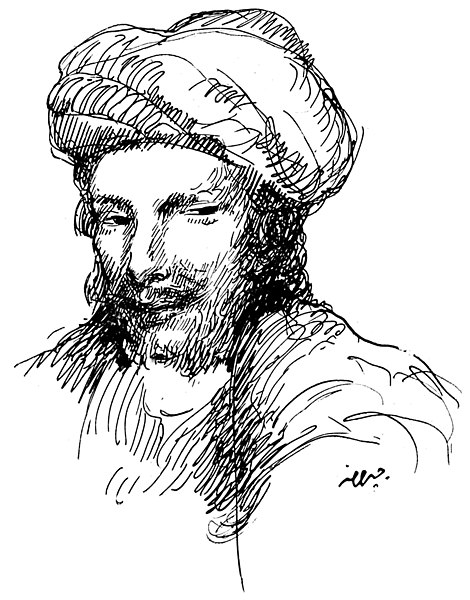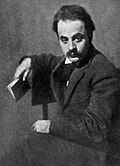Fiila:Abu Nuwas.jpg

Ovdačájáhusa sturrodat: 470 × 600 piksela (govvačuoggá). Andre oppløsninger: 188 × 240 piksela (govvačuoggá) | 376 × 480 piksela (govvačuoggá) | 833 × 1 063 piksela (govvačuoggá).
Álgovuolggalaš fiila (833 × 1 063 piksela (govvačuoggá), fiilasturrodat: 323 KiB, MIME-tiipa: image/jpeg)
Fiilla historjá
Go deaddilat beaivemeari, oainnat makká fiila lei dalle.
| Beaivemearri/Áigi | Govaš | Mihtut | Geavaheaddji | Kommentára | |
|---|---|---|---|---|---|
| dálá | borgemánnu 7 b. 2019 dii. 20.17 |  | 833 × 1 063 (323 KiB) | FunkMonk | Bigger. |
| borgemánnu 2 b. 2008 dii. 11.14 |  | 242 × 305 (36 KiB) | FunkMonk | {{Information |Description=Abu Nuwas, Drawing by Kahlil Gibran al-Funun 2, no. 1 (June 1916) |Source=http://www.al-funun.org/al-funun/images/index.html |Date=June 1916 |Author=Kahlil Gibran |Permission= |other_versions= }} {{ImageUpload|basic}} |
Liŋkkat
Čuovvovaš siidduin lea liŋka dán fiilai:
Fiilla vuogádatviidosaš geavaheapmi
Følgende andre wikier bruker denne filen:
- Geavaheapmi prošeavttas af.wikipedia.org
- Geavaheapmi prošeavttas als.wikipedia.org
- Geavaheapmi prošeavttas alt.wikipedia.org
- Geavaheapmi prošeavttas an.wikipedia.org
- Geavaheapmi prošeavttas ar.wikipedia.org
- Geavaheapmi prošeavttas ar.wikiquote.org
- Geavaheapmi prošeavttas ar.wikisource.org
- Geavaheapmi prošeavttas arz.wikipedia.org
- Geavaheapmi prošeavttas ast.wikipedia.org
- Geavaheapmi prošeavttas av.wikipedia.org
- Geavaheapmi prošeavttas azb.wikipedia.org
- Geavaheapmi prošeavttas az.wikipedia.org
- Geavaheapmi prošeavttas bat-smg.wikipedia.org
- Geavaheapmi prošeavttas ba.wikipedia.org
- Geavaheapmi prošeavttas be-tarask.wikipedia.org
- Geavaheapmi prošeavttas be.wikipedia.org
- Geavaheapmi prošeavttas bg.wikipedia.org
- Geavaheapmi prošeavttas bi.wikipedia.org
- Geavaheapmi prošeavttas bjn.wikipedia.org
- Geavaheapmi prošeavttas bn.wikipedia.org
- Geavaheapmi prošeavttas br.wikipedia.org
- Geavaheapmi prošeavttas bs.wikipedia.org
- Geavaheapmi prošeavttas bxr.wikipedia.org
- Geavaheapmi prošeavttas ca.wikipedia.org
- Geavaheapmi prošeavttas ce.wikipedia.org
- Geavaheapmi prošeavttas ckb.wikipedia.org
- Geavaheapmi prošeavttas co.wikipedia.org
- Geavaheapmi prošeavttas cs.wikipedia.org
- Geavaheapmi prošeavttas cy.wikipedia.org
- Geavaheapmi prošeavttas da.wikipedia.org
- Geavaheapmi prošeavttas de.wikipedia.org
- Geavaheapmi prošeavttas el.wikipedia.org
- Geavaheapmi prošeavttas en.wikipedia.org
Vis mer global bruk av denne filen.
